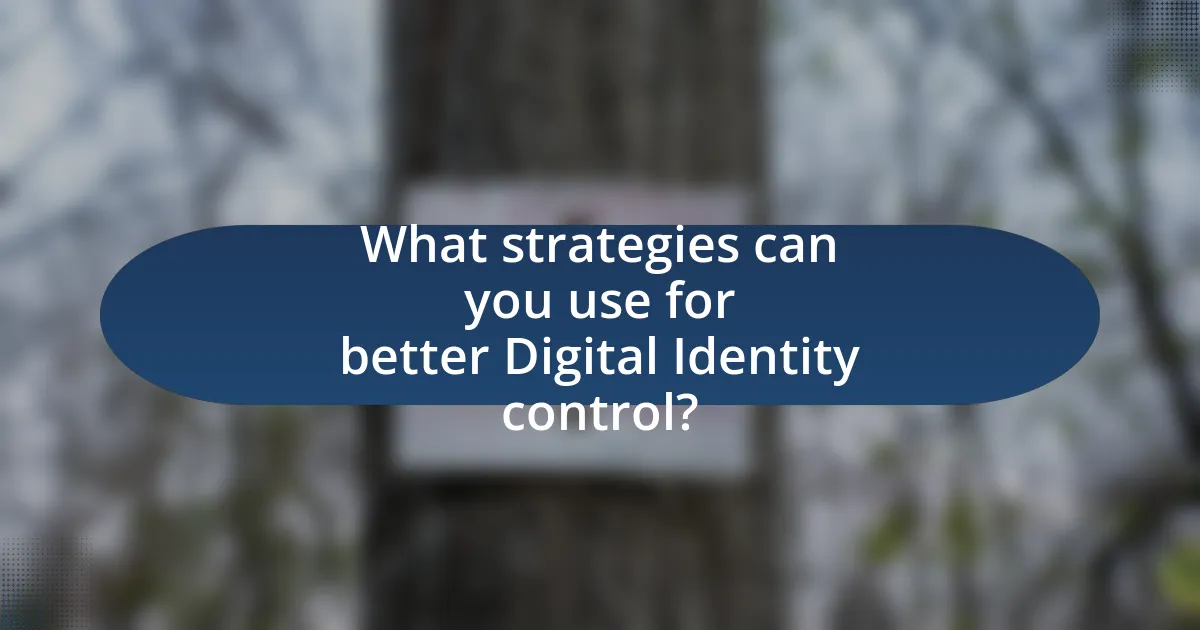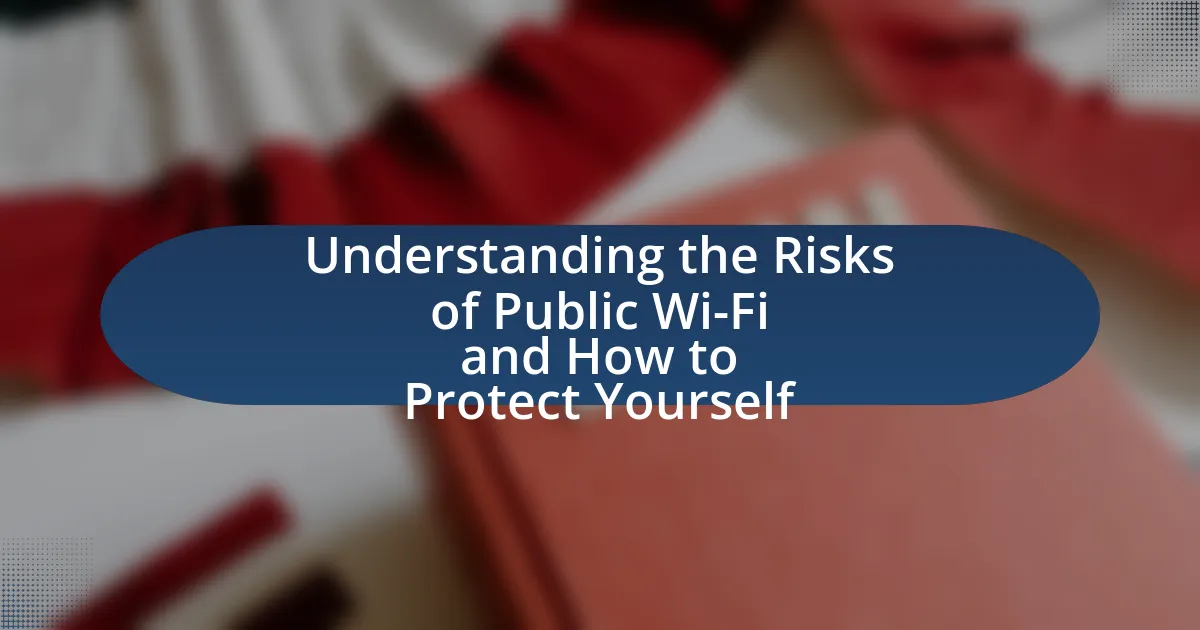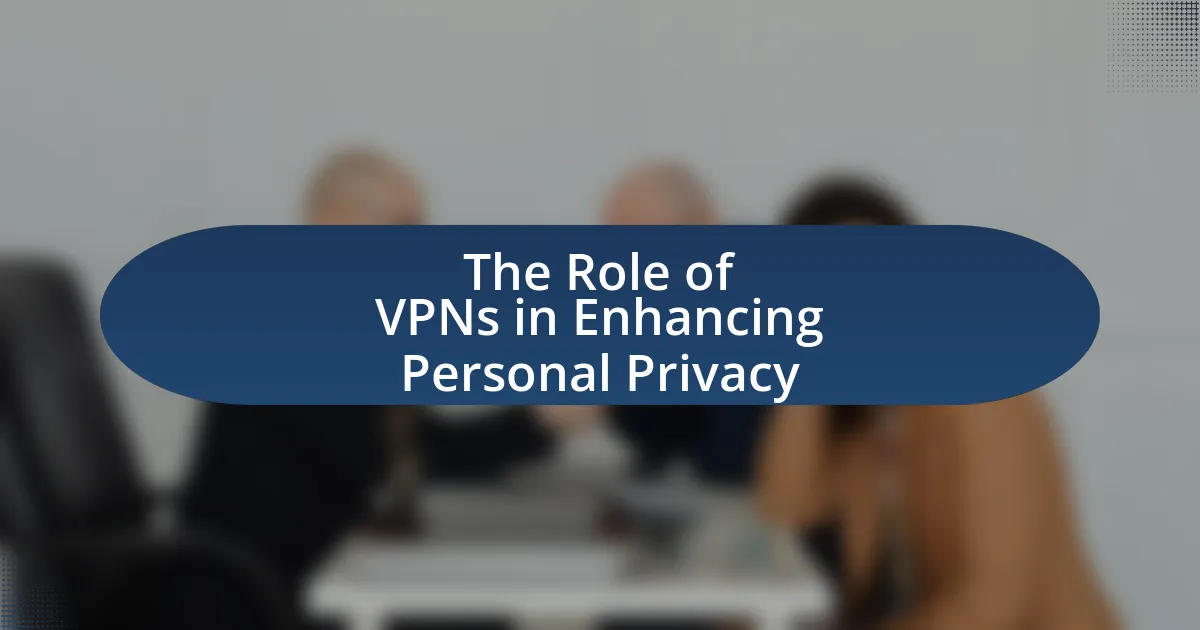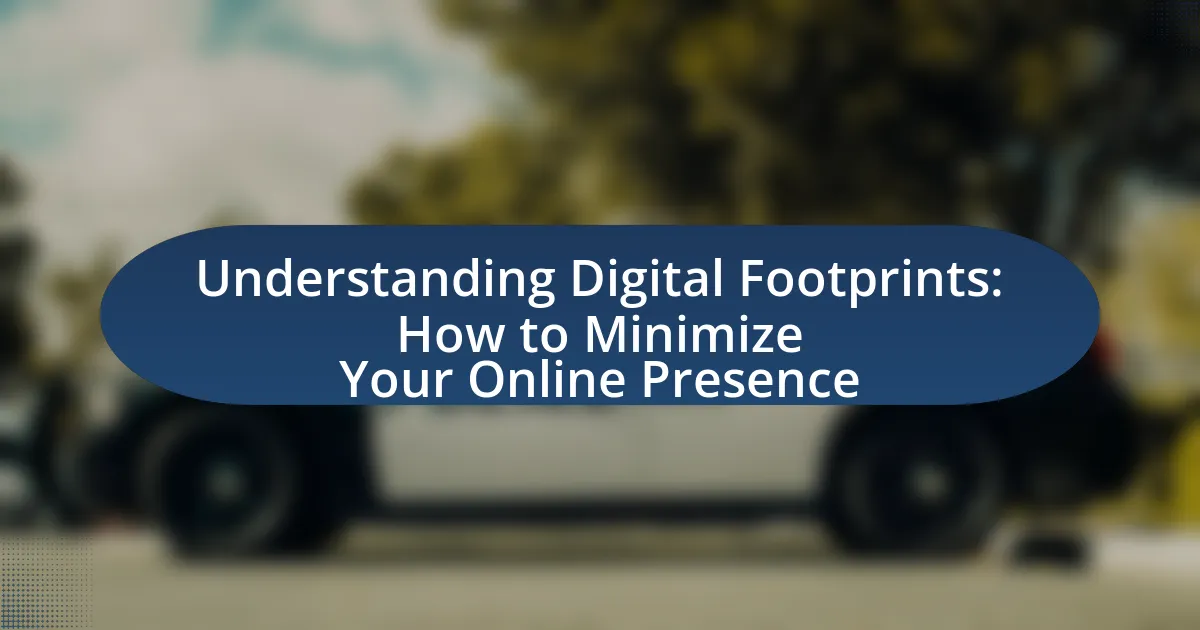Digital Identity Management encompasses the processes and technologies used to create, maintain, and secure an individual’s or organization’s digital identity across online platforms. This article outlines the significance of effective digital identity management, highlighting its impact on security, user experience, and compliance with regulations. Key components such as personal information, authentication methods, and online presence are discussed, along with strategies for enhancing control over digital identity. The article also addresses the risks associated with poor management, best practices for safeguarding personal information, and tools available for monitoring digital identities, providing practical tips for individuals and organizations to protect their online presence.

What is Digital Identity Management?
Digital Identity Management refers to the processes and technologies used to create, maintain, and secure an individual’s or organization’s digital identity across various online platforms. This management encompasses the control of personal information, authentication methods, and access rights to ensure privacy and security in digital interactions. According to a report by the International Data Corporation, organizations that implement effective digital identity management can reduce security breaches by up to 80%, highlighting the importance of robust identity management systems in protecting sensitive data.
How does Digital Identity Management impact individuals and organizations?
Digital Identity Management significantly impacts individuals and organizations by enhancing security, improving user experience, and ensuring compliance with regulations. For individuals, effective digital identity management reduces the risk of identity theft and fraud, as it allows for better control over personal information and access to online services. Organizations benefit from streamlined processes, as they can manage employee access to sensitive data more efficiently, leading to increased productivity and reduced operational costs. According to a study by the Ponemon Institute, organizations that implement strong identity management practices can reduce the cost of data breaches by an average of $1.23 million. This demonstrates that robust digital identity management not only protects individuals but also provides tangible financial benefits to organizations.
What are the key components of Digital Identity?
The key components of Digital Identity include personal information, authentication methods, and online presence. Personal information encompasses data such as name, email address, and phone number, which are essential for establishing identity online. Authentication methods involve techniques like passwords, biometrics, and two-factor authentication that verify an individual’s identity. Online presence refers to the digital footprint created through social media profiles, websites, and online interactions, which collectively shape how an individual is perceived in the digital space. These components are critical for managing and securing one’s digital identity effectively.
How do privacy and security relate to Digital Identity Management?
Privacy and security are integral components of Digital Identity Management, as they ensure the protection of personal information and prevent unauthorized access. Digital Identity Management involves the processes and technologies used to manage an individual’s online identity, which includes sensitive data such as usernames, passwords, and personal details. Effective privacy measures, such as data encryption and user consent protocols, safeguard this information from breaches, while robust security practices, including multi-factor authentication and regular security audits, help to mitigate risks associated with identity theft and fraud. According to a report by the Ponemon Institute, 60% of organizations experienced a data breach in the past year, highlighting the critical need for strong privacy and security frameworks in managing digital identities.
Why is managing your Digital Identity important?
Managing your digital identity is important because it directly influences your online reputation and security. A well-managed digital identity helps protect personal information from cyber threats, reduces the risk of identity theft, and ensures that the information available about you online aligns with your personal and professional image. According to a study by the Pew Research Center, 64% of Americans have experienced a major data breach, highlighting the necessity of actively managing one’s digital presence to mitigate risks associated with such breaches.
What risks are associated with poor Digital Identity management?
Poor digital identity management poses significant risks, including identity theft, data breaches, and reputational damage. Identity theft occurs when unauthorized individuals gain access to personal information, leading to fraudulent activities. According to the Identity Theft Resource Center, there were over 1,100 data breaches reported in 2020, exposing millions of records. Data breaches can result in sensitive information being compromised, which can be exploited for financial gain or other malicious purposes. Additionally, reputational damage can arise when personal or sensitive information is leaked, affecting an individual’s or organization’s credibility and trustworthiness. These risks highlight the importance of effective digital identity management practices to safeguard personal and organizational information.
How can effective management enhance personal and professional opportunities?
Effective management enhances personal and professional opportunities by optimizing resource allocation, improving decision-making, and fostering collaboration. When individuals or organizations implement effective management practices, they can streamline processes, which leads to increased productivity and efficiency. For instance, a study by the Project Management Institute found that organizations with high project management maturity achieve 28 times more successful project outcomes, directly correlating to enhanced career prospects and business growth. Furthermore, effective management cultivates a positive work environment, encouraging innovation and teamwork, which are essential for personal development and professional networking.

What strategies can you use for better Digital Identity control?
To achieve better digital identity control, individuals should implement strategies such as regularly updating privacy settings, using strong and unique passwords, and enabling two-factor authentication. Regularly updating privacy settings on social media platforms and online accounts ensures that personal information is shared only with intended audiences. Strong and unique passwords reduce the risk of unauthorized access; according to a study by the National Institute of Standards and Technology, using complex passwords can significantly lower the likelihood of breaches. Enabling two-factor authentication adds an additional layer of security, making it harder for attackers to gain access even if passwords are compromised. These strategies collectively enhance digital identity control by minimizing exposure to risks and unauthorized access.
How can you assess your current Digital Identity?
To assess your current Digital Identity, conduct a comprehensive audit of your online presence across various platforms. This involves searching for your name on search engines, reviewing social media profiles, and analyzing the privacy settings of your accounts. According to a 2021 study by the Pew Research Center, 70% of adults in the U.S. have searched for their own name online, highlighting the importance of understanding what information is publicly accessible. Additionally, tools like Google Alerts can help monitor mentions of your name or brand, providing ongoing insights into your digital footprint.
What tools are available for monitoring your Digital Identity?
Tools available for monitoring your digital identity include Google Alerts, which notifies users of new mentions of their name or brand online, and social media monitoring tools like Hootsuite or Brandwatch, which track mentions across various platforms. Additionally, services like Reputation Defender and PrivacyDuck help manage and protect personal information by removing unwanted content from search results. These tools provide users with insights into their online presence, enabling proactive management of their digital identity.
How can you identify potential vulnerabilities in your Digital Identity?
To identify potential vulnerabilities in your digital identity, conduct a comprehensive audit of your online accounts and personal information. This involves reviewing privacy settings on social media platforms, checking for data breaches using tools like Have I Been Pwned, and assessing the strength of your passwords through password managers that evaluate password security. Research indicates that 81% of data breaches are due to weak or stolen passwords, highlighting the importance of strong password practices. Additionally, regularly monitoring your financial accounts for unauthorized transactions can help detect identity theft early.
What best practices should you follow for managing your Digital Identity?
To effectively manage your digital identity, you should regularly monitor your online presence, utilize strong and unique passwords, and adjust privacy settings on social media platforms. Regular monitoring allows you to identify any unauthorized use of your information, while strong passwords reduce the risk of hacking; for instance, using a password manager can help generate and store complex passwords securely. Adjusting privacy settings ensures that you control who can see your information, which is crucial given that 70% of internet users are concerned about their online privacy. These practices collectively enhance your control over your digital identity and protect your personal information from potential threats.
How can you create strong, unique passwords?
To create strong, unique passwords, use a combination of at least 12 characters, including uppercase letters, lowercase letters, numbers, and special symbols. This complexity makes it significantly harder for attackers to guess or crack passwords. Research indicates that passwords with a mix of character types are more secure; for instance, a study by the University of Cambridge found that passwords with at least 12 characters are exponentially more resistant to brute-force attacks compared to shorter passwords. Additionally, avoid using easily guessable information such as birthdays or common words, as these can be quickly compromised. Using a password manager can also help generate and store unique passwords for different accounts, further enhancing security.
What role does two-factor authentication play in Digital Identity security?
Two-factor authentication (2FA) significantly enhances digital identity security by requiring users to provide two distinct forms of verification before gaining access to their accounts. This additional layer of security mitigates the risk of unauthorized access, as even if a password is compromised, the second factor—such as a text message code or authentication app—remains a barrier to entry. According to a study by Google, implementing 2FA can block up to 99% of automated attacks, demonstrating its effectiveness in protecting sensitive information and maintaining the integrity of digital identities.

How can you maintain your Digital Identity over time?
To maintain your digital identity over time, regularly update your online profiles and privacy settings across all platforms. Consistent monitoring of your digital presence allows you to manage what information is publicly accessible, ensuring that outdated or inaccurate details are corrected. Research indicates that 70% of employers use social media to screen candidates, highlighting the importance of a curated digital identity. Additionally, utilizing tools like Google Alerts can help you track mentions of your name online, enabling proactive management of your reputation.
What ongoing practices should you adopt for Digital Identity management?
To effectively manage your digital identity, adopt ongoing practices such as regularly updating passwords, enabling two-factor authentication, and monitoring your online presence. Regularly updating passwords reduces the risk of unauthorized access, as studies show that 81% of data breaches are linked to weak or stolen passwords. Enabling two-factor authentication adds an additional layer of security, making it harder for attackers to gain access even if they have your password. Monitoring your online presence helps you stay aware of how your information is being used and allows you to respond quickly to any unauthorized use or misrepresentation.
How often should you review and update your Digital Identity information?
You should review and update your Digital Identity information at least once every six months. Regular reviews help ensure that your personal information remains accurate and secure, especially as online platforms frequently change their privacy policies and data management practices. According to a study by the Pew Research Center, 70% of internet users have experienced some form of online privacy concern, highlighting the importance of proactive management of digital identities.
What steps can you take to protect your Digital Identity from emerging threats?
To protect your digital identity from emerging threats, implement strong, unique passwords for each account and enable two-factor authentication (2FA) wherever possible. Strong passwords reduce the risk of unauthorized access, while 2FA adds an additional layer of security by requiring a second form of verification. According to a 2021 report by the Cybersecurity & Infrastructure Security Agency, using 2FA can block 99.9% of automated attacks. Regularly monitor your online accounts for suspicious activity and promptly report any unauthorized access. Additionally, utilize privacy settings on social media platforms to limit the information shared publicly, as oversharing can lead to identity theft. Lastly, keep your software and devices updated to protect against vulnerabilities that could be exploited by cybercriminals.
What are the common pitfalls in Digital Identity management?
Common pitfalls in digital identity management include inadequate security measures, poor user awareness, and lack of centralized control. Inadequate security measures often lead to data breaches, as organizations may fail to implement strong authentication protocols or encryption methods. Poor user awareness results in individuals neglecting to manage their privacy settings or falling victim to phishing attacks, which can compromise their digital identities. Additionally, a lack of centralized control can create inconsistencies in identity verification processes, making it difficult to maintain accurate and secure records. These pitfalls highlight the importance of robust security practices, user education, and effective management strategies in safeguarding digital identities.
How can you avoid oversharing personal information online?
To avoid oversharing personal information online, individuals should implement strict privacy settings on social media platforms and limit the amount of personal data shared in posts. Research indicates that 70% of users do not adjust their privacy settings, which increases the risk of unintentional oversharing. By regularly reviewing and adjusting these settings, users can control who sees their information and reduce exposure to potential privacy breaches. Additionally, individuals should think critically before posting, considering whether the information could be misused or lead to unwanted attention.
What mistakes should you avoid when managing your Digital Identity?
When managing your digital identity, you should avoid oversharing personal information. Oversharing can lead to identity theft, as statistics show that 1 in 15 people fall victim to identity fraud each year, according to the Federal Trade Commission. Additionally, neglecting privacy settings on social media platforms can expose sensitive data to unauthorized users, increasing the risk of cyberbullying or harassment. Failing to regularly update passwords and using weak passwords also compromises security; a study by Verizon indicates that 81% of data breaches are due to weak or stolen passwords. Lastly, not monitoring your digital footprint can prevent you from identifying and addressing potential threats, as research from the Pew Research Center highlights that 64% of Americans have experienced some form of data breach.
What practical tips can enhance your Digital Identity management?
To enhance your Digital Identity management, regularly audit your online presence by searching for your name and reviewing privacy settings on social media platforms. This practice allows you to identify any unwanted information and control what is publicly accessible. According to a 2021 survey by Pew Research Center, 70% of adults have taken steps to limit the amount of personal information available online, highlighting the importance of proactive management. Additionally, using strong, unique passwords for different accounts and enabling two-factor authentication can significantly reduce the risk of unauthorized access, as reported by the Cybersecurity & Infrastructure Security Agency.





